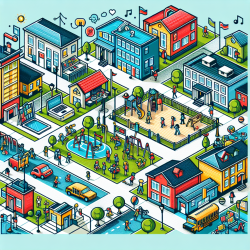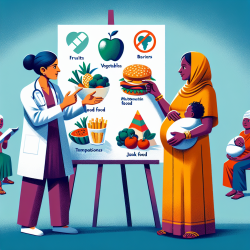The relationship between impulsivity, neighborhood disadvantage, and adolescent violence is a complex one that has been explored in recent research. Understanding these dynamics can provide valuable insights for practitioners working with at-risk youth in educational settings. This blog post delves into the findings of the study titled Unpacking the Relationships between Impulsivity, Neighborhood Disadvantage, and Adolescent Violence: An Application of a Neighborhood-Based Group Decomposition, offering practical applications and encouraging further research.
The Influence of Neighborhood Contexts
The study highlights that adolescents living in economically disadvantaged neighborhoods are more likely to exhibit higher levels of impulsivity and violence. This is attributed to both developmental processes and contextual influences present in these environments. For practitioners, this means that interventions need to be tailored not only to the individual but also consider the broader ecological context in which they reside.
Key Findings
- Impulsivity and Violence: Impulsivity is positively associated with self-reported violence among adolescents. This relationship is particularly strong in disadvantaged neighborhoods.
- Contextual Moderation: The effect of impulsivity on violence is amplified in socioeconomically disadvantaged areas due to greater opportunities for delinquency and weaker social controls.
- Compositional Differences: Higher levels of impulsivity and violence are concentrated in disadvantaged neighborhoods, suggesting both individual and environmental factors at play.
Practical Applications for Practitioners
The findings suggest several strategies that practitioners can implement to improve outcomes for at-risk youth:
- Cultural Competency Training: Equip staff with the skills to understand and address the unique challenges faced by students from diverse socioeconomic backgrounds.
- Community Engagement: Foster partnerships with local organizations to create supportive environments that mitigate the negative effects of neighborhood disadvantage.
- Individualized Interventions: Develop personalized intervention plans that consider both the individual’s impulsivity levels and their neighborhood context.
- Pilot Programs: Implement pilot programs that test new approaches in different neighborhood settings to identify effective strategies for reducing violence and impulsivity among adolescents.
The Need for Further Research
This study underscores the importance of understanding both developmental and contextual influences on adolescent behavior. Practitioners are encouraged to engage with ongoing research efforts to refine intervention strategies further. By doing so, they can contribute to a deeper understanding of how neighborhood contexts affect youth behavior and help develop more effective support systems.










